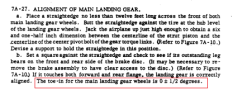not sure if its been said already or you been give that pointer, but I found very good results with the goodyear flight special II (4ply)
uneven wear can also come from inaccurate pressures on the tire(s). On the arrow I have its 30 nose and 27 mains, for whatever reason, not persistent leaks, they lose pressure over time, especially on hot days.
Also passenger and fuel loading on a low pressure tire on a heavier loaded side can give you some extra wear as well especially on warmer days and hard landings/letting her sit on the ramp in the summer heat...
xander
uneven wear can also come from inaccurate pressures on the tire(s). On the arrow I have its 30 nose and 27 mains, for whatever reason, not persistent leaks, they lose pressure over time, especially on hot days.
Also passenger and fuel loading on a low pressure tire on a heavier loaded side can give you some extra wear as well especially on warmer days and hard landings/letting her sit on the ramp in the summer heat...
xander





